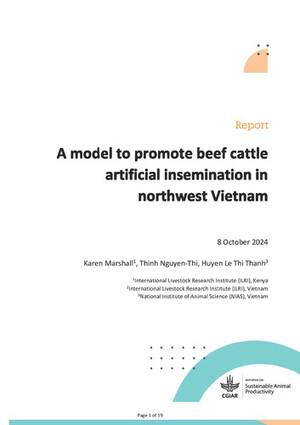
Joint genetic analysis for dairy cattle performance across countries in sub-Saharan Africa
Abstract
This study assessed the feasibility of across-country genetic evaluation of dairy cattle in sub-Saharan Africa where data on livestock production are scarce. Genetic parameters were estimated for the 305-day milk yield in the first lactation and across five lactations, for age at first calving and for interval between first and second calving. Estimated breeding values of individual animals for these traits were calculated. There were records from 2 333, 25 208, and 5 929 Holstein cows in Kenya, South Africa, and Zimbabwe, and 898 and 65134 Jersey cows from Kenya and South Africa. Genetic gain from sire selection within and across countries. was predicted Genetic links between countries were determined from sires with daughters that had records in two or more countries, and from common ancestral sires across seven generations on both the maternal and paternal sides of the pedigree. Each country was treated as a trait in the across-country evaluation. The results showed that genetic variance and heritability were not always estimable within country, but were significantly different from zero in the across-country evaluation. In all three countries, there was greater genetic gain in all traits from an across-country genetic evaluation owing to greater accuracy of selection compared with within country. Kenya stood to benefit most from an across-country evaluation, followed by Zimbabwe, then South Africa. An across-country breeding programme using joint genetic evaluation would be feasible, provided that there were genetic links across countries, and would provide a platform for accelerated genetic progress through selection and germplasm exchange between sub-Saharan African countries.Keywords: across-country genetic evaluation, genetic connectedness, genetic progress
Citation
Opoola, O., Banos, G., Ojango, J.M.K., Mrode, R., Simm, G., Banga, C.B., Beffa, L.M. and Chagunda, M.G.G. 2020. Joint genetic analysis for dairy cattle performance across countries in sub-Saharan Africa. South African Journal of Animal Science 50(4):507-520.









